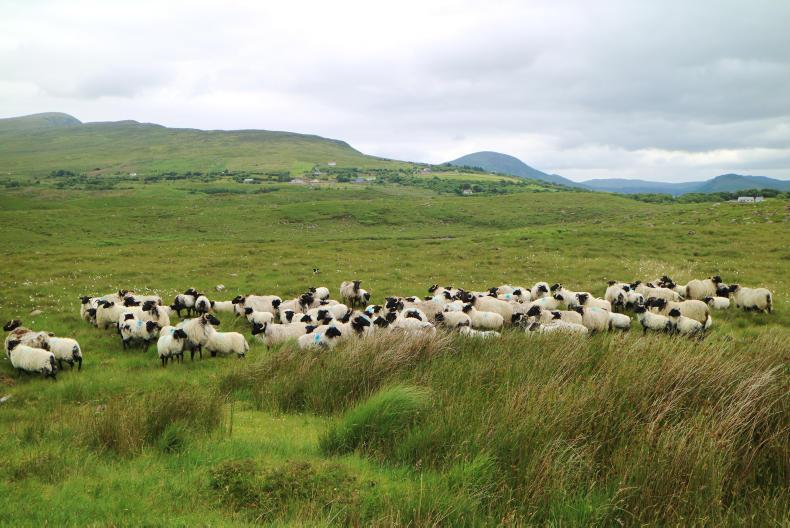The large crowd in attendance heard how the INHFA is campaigning for a front-loaded payment on the first 20ha at a payment rate of €250/ha. The second point is to increase the rate on the next 14ha to €170/ha and to increase the overall numbers of eligible hectares from 34 to 40 with a payment rate of €70/ha on each hectare over 34ha.
'Specifically constrained' areas
The INHFA is proposing that this be done by adding all Natura, privately owned hill and mountain commonage areas into a "specifically constrained" category that would allow for higher payment rates, similar to what is currently seen on the islands. This would boost ANC payments from the current cap of approximately €3,400 to €7,800 for farmers with 40ha or more of Natura, hill or commonage land.
INHFA ANC Campaign kicked off in Letterkenny. Colm O'Donnell calling on politicians to support the campaign. pic.twitter.com/CmWIHAzVXT
— Nathan Tuffy (@nathantuffy) 3 février 2017
INHFA CAP chair Colm O’Donnell said that the Government has the opportunity to designate up to 10% of the total area into this "specifically constrained" category. The INHFA feels if all Islands, Natura, hill and commonage land is included, this will still be less than 10%.
Listen to Colm O'Donnell's explanations in our podcast below:
Listen to "The INHFA's proposal for ANC review" on Spreaker.
Bio-physical review
The Department of Agriculture has conducted a bio-physical review of lands around the country as part of the ANC review. There were widespread calls for the Department to produce maps of the lands which will be designated as naturally constrained as soon as possible to facilitate a consultation period with farming organisations before the final drafts are sent to Brussels. O’Donnell said that the bio-physical review is based on science. However, the selection of land under the "specifically constrained" heading is a political one. The INHFA has warned that it will be watching closely to ensure that the process is fair.
Read more about the campaign in next week’s Irish Farmers Journal.






 This is a subscriber-only article
This is a subscriber-only article









SHARING OPTIONS: